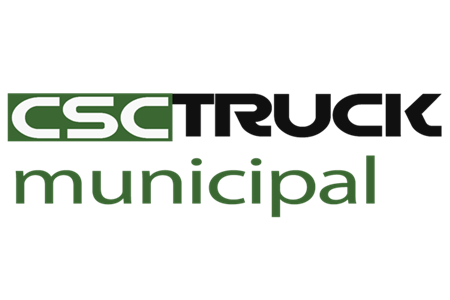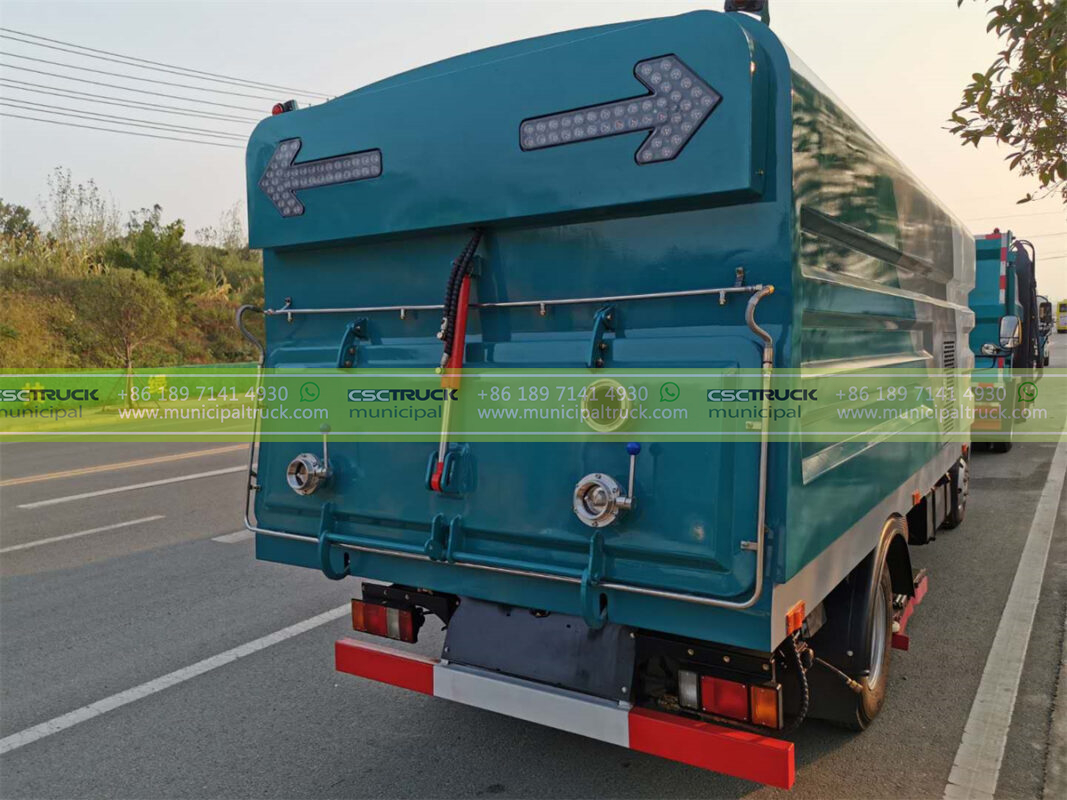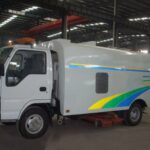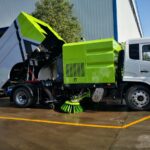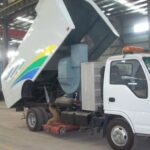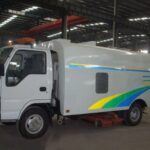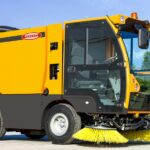As California’s reservoirs dip below 30% capacity and Barcelona enforces 23% water rationing, municipal services face a radical question: How do we maintain clean, healthy streets when water itself becomes a restricted resource? The emergence of waterless sweeper trucks represents not merely an equipment upgrade but a fundamental reengineering of urban hygiene—a technology transforming drought-stricken cities from Rome to Cape Town while preserving livability amid climate collapse.
The Hydraulic Paradox of Modern Street Cleaning
Traditional sweeping relies on water-intensive processes that clash with 21st-century realities:
- Resource Incompatibility: Conventional broom sweepers consume 200-400 liters per hour—equivalent to a household’s daily usage—to suppress dust and bind debris
- Infrastructure Damage: In Montreal’s -30°C winters, spray systems create lethal black ice on 17% of swept routes
- Ecological Contradiction: Phoenix’s water-reclamation sweeper trucks lost 68% of moisture to evaporation before reaching treatment plants
- Regulatory Barriers: Madrid’s Level 4 drought protocols now ban municipal water usage between 8am-10pm, paralyzing traditional cleaning
When Athens introduced sweeping curfews during 2024’s heat dome, airborne particulate matter (PM2.5) increased by 133%—directly correlating with a 22% spike in pediatric asthma cases. Waterless technology dissolves these tradeoffs through mechanical innovation.
Engineering the Impossible: Dust Control Without Drops
Modern waterless sweepers integrate four synergistic systems that replace hydraulic functions:
Electrostatic Precipitation Arrays
Titanium-coated drum brushes generate 15kV negative charges, magnetically attracting particulates as fine as 0.3 microns—surpassing water’s dust-suppression capability by 3.2× in Barcelona trials. The self-cleaning system discharges collected dust only when deactivated at depots.
Laminar Airflow Envelopes
Venturi nozzles create a low-pressure curtain around brushes, containing debris within a 15cm controlled zone. Munich’s BOS-22 models achieve 98% capture efficiency on coal-tar streets where water spraying historically washed toxins into storm drains.
Cyclonic Microfiltration
Three-stage HEPA filters process 3,000m³/hr of air, trapping particulates in sequential chambers. Singapore’s units extract 99.97% of silica dust from construction corridors without generating wastewater sludge.
Resonance Frequency Brushes
Polymer bristles vibrate at 140Hz to dislodge embedded debris—a frequency optimized through computational fluid dynamics to avoid damaging historic cobblestones in Bruges’ UNESCO core.
Operational Superiority in Extreme Environments
Waterless sweepers excel where conventional methods fail:
| Environment | Traditional Challenge | Waterless Solution |
|---|---|---|
| Desert Cities | 75% water loss to evaporation | Zero consumption; PM10 reduction by 89% |
| Arctic Zones | Frozen spray systems (-25°C limit) | Operational to -45°C; ice prevention |
| Heritage Districts | Water damage to medieval mortar | Vibration-controlled dry cleaning |
| Mine Corridors | Toxic slurry creation | Isolated hazardous material capture |
During Australia’s 2024 “Black Summer” wildfires, waterless sweepers operated safely amid Level 2 smoke alerts where sprinkler-equipped units would have wasted precious firefighting reserves.
Specialized Applications Redefining Municipal Service
Beyond drought response, these platforms enable unprecedented capabilities:
Hyperlocal Pollution Control
Los Angeles deploys waterless sweepers with real-time mass spectrometers that:
- Detect heavy metals from tire wear (capturing 94% of zinc emissions)
- Identify industrial chemical leaks within 500m radius
- Auto-report violations to environmental agencies
Historic Infrastructure Preservation
In Jerusalem’s Old City, waterless systems:
- Prevent salt migration into Crusader-era walls
- Avoid moisture-triggered erosion of Roman road substrates
- Eliminate fungal growth from residual dampness
Disaster Response Integration
Post-earthquake scenarios in Istanbul leverage sweeper-mounted Lidar to:
- Map street-level debris for optimized clearance
- Detect subsurface utility damage through vibration analysis
- Create emergency access routes without water dependency
The Sustainability Multiplier Effect
Removing water from sweeping unlocks cascading benefits:
- Energy Recovery: Regenerative braking on Lisbon’s hills powers filtration for 8 hours
- Waste Valorization: Berlin converts captured dust into construction-grade ceramics
- Carbon Neutrality: Solar-assisted models in Tucson offset 14 tons CO2/year
- Noise Reduction: 58dB operation allows nighttime cleaning in Tokyo’s residential zones
Seoul’s autonomous waterless sweepers now maintain 32km of elevated parks where water trucks cannot physically access—proving that dry technology enables access to previously unserviceable public spaces.
Future-Proofing Urban Landscapes
Next-generation systems transcend cleaning to become environmental sensors:
Atmospheric Water Harvesting
Prototype units in Dubai’s fog corridors:
- Capture airborne moisture during operation
- Filter 40L/hour for emergency public hydration stations
- Cool street surfaces by 7°C through passive evaporation
Self-Powered Operation
Kansas City’s piezoelectric brush system:
- Converts friction energy into electricity
- Generates surplus 18kW/day for grid feedback
- Enables indefinite deployment during blackouts
Predictive Pollution Modeling
AI systems correlate swept particulates with:
- Real-time health advisory triggers
- Industrial emission source identification
- Microclimate change projections
The New Hydrology of Urban Stewardship
As sprinkler trucks relinquish their dominance in water-restricted zones and conventional road sweeper trucks evolve into hybrid units, the waterless revolution represents more than equipment substitution—it signifies a philosophical shift toward sufficiency-based infrastructure. These silent operators move through Madrid’s dawn streets or Nairobi’s industrial quarters not as machines, but as hydrological diplomats negotiating between human habitability and planetary boundaries. Their spinning brushes write a new covenant on our pavements: that cleanliness need not be measured in liters, but in the absence of compromise.
